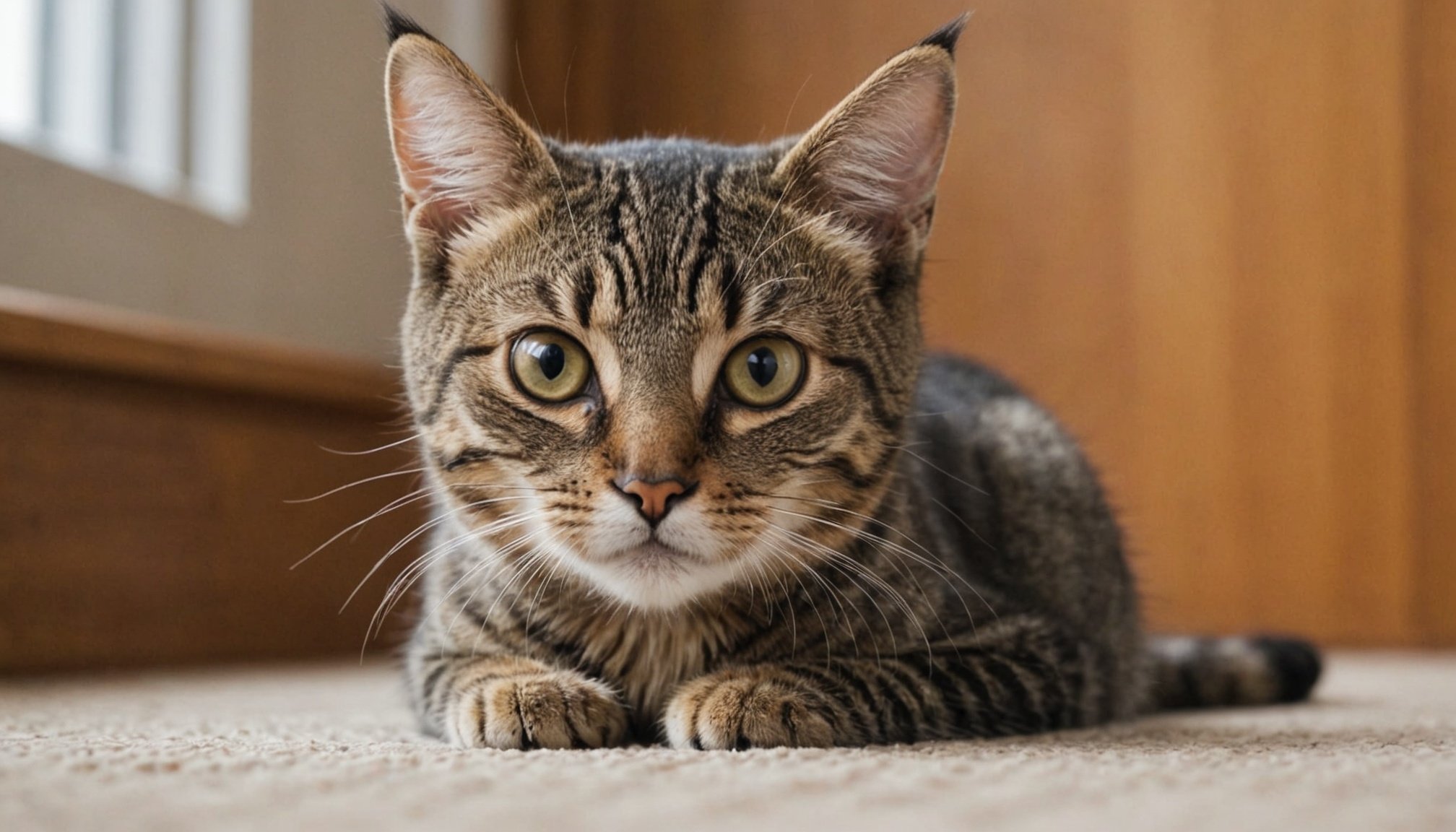Preparing Your Cat for a New Arrival
Welcoming a new baby into the home? The transition can be challenging for your feline friend. Understanding your cat’s behaviour and temperament is essential to ensure a smooth adaptation. Start by observing their quirks and habits; a cat that appreciates quiet spaces might need more time to acclimate than a naturally outgoing one.
Early preparation plays a crucial role. Familiarise your cat with potential changes in environment and routine well in advance. Introduce any new furniture or baby items gradually to prevent overwhelming your pet. This foresight not only helps your cat adjust but also reduces anxiety once the baby arrives.
Topic to read : Mastering the shift: vital strategies for a seamless transition to a raw food diet for your cat
One effective strategy is the gradual introduction. Begin by letting your cat explore the nursery at their own pace, while introducing baby-related sounds and scents in a controlled environment. This acclimatises them to the new presence without direct interaction, allowing for a more comfortable transition.
By investing time in early preparation and understanding, you’ll foster an environment where both your cat and the new baby can thrive. This lays the foundation for harmonious cohabitation, ensuring minimal disruption and stress for all members of your household.
In parallel : Expert tips for smoothly introducing your senior cat to a playful new kitten
Gradual Introductions
Welcoming a new baby into your home is a big change, especially for your feline companion. Gradual introductions play a pivotal role in ensuring safe interactions and a stress-free transition for both your cat and infant.
Creating Familiarity
Start by incorporating baby-related scents into your cat’s environment. Let the cat smell baby lotion or clothing as a way to slowly acclimate them to the upcoming change. This introduction through smell helps lay the groundwork for more direct interactions later.
Controlled Introductions
When it’s time for face-to-face introductions, make sure to establish a safe space where the cat can retreat if needed. Initial meetings should be short and positive, allowing the cat to approach at their own pace. Praise and gentle encouragement can make these first encounters more pleasant and less intimidating.
Monitoring Interactions
Keep a close eye on the interactions between your cat and baby. Identifying cues of discomfort or stress ensures that your cat feels secure. By managing these early interactions carefully, you create a safe environment where your cat can adapt comfortably to their new family member. Establishing these habits early promotes a harmonious household, benefiting everyone involved.
Behavioral Training Techniques
When faced with welcoming a new baby, focusing on effective pet behavioral training can ease the transition for your cat. Training your cat before the baby’s arrival is crucial. This involves creating a repertoire of basic commands and expectations that address any behavioural concerns. Commands like “no,” “come,” or “stay” can be vital to establishing boundaries in the household to prevent your cat from venturing into unsafe territory.
Embrace reward-based training methods to implement positive reinforcement techniques. Offering treats or affection for desired behaviour encourages your cat to adhere to the established rules. Consistency is imperative. Use repetition and patience to reinforce these commands, making the process intuitive for your pet.
Strategies that discourage unwanted behaviours are equally important. Should your feline friend venture too close to sensitive baby areas, introduce distractions, or use gentle deterrents. This can train the cat to associate these spaces as off-limits, enabling a safer environment.
Integrating these adjusting cat behaviour techniques ensures that your household remains harmonious even with this significant life change. An anticipatory approach requires balancing firm boundaries and warmth to successfully acclimate your cat.
Adjusting Daily Routines
Adapting your cat’s daily schedule is crucial when preparing your cat for a new baby. Your pet needs stability amidst change, ensuring a smoother transition to accommodate the new household member.
Maintaining regular feeding and play schedules is essential. A consistent routine provides reassurance and helps your cat remain calm. Predictability in these daily activities protects against unwelcome behavioural issues, making it easier to manage both cat and baby care. This involves keeping meal, playtime, and bedtime routines unchanged or only gradually tweaking them.
Incorporate your cat into family activities to encourage acceptance of the new dynamics. This might mean scheduling brief play sessions with your infant nearby or inviting the cat to cuddle during family downtime. Such interactions foster a sense of inclusion and reduce feelings of neglect.
To ease into these transitions, it is beneficial to introduce changes in household dynamics slowly. By integrating adjustments over time, as opposed to suddenly, you reduce potential anxiety for your cat. Pet routines adjustment involves understanding the balance between maintaining consistency and gradually preparing your cat for shared living, ensuring harmony within the home.
Safety Precautions
Ensuring cat safety with a new baby requires thoughtful preparation and awareness. Start by thoroughly baby-proofing the home, considering both feline curiosity and infant vulnerability. Baby-proofing for pets involves securing cupboards, covering electrical outlets, and keeping small objects that could be swallowed out of reach. Scrutinizing each room for potential hazards can prevent accidents and ensure peace of mind.
Identifying and mitigating risks goes beyond simple safety measures. For example, look for places where your cat might jump or hide close to baby items or sleeping areas. This vigilance helps avoid situations where the baby might inadvertently disturb or threaten your cat, reducing stress for pets.
Creating secure spaces for the cat is crucial. Allocate an area where your cat can retreat to if the household becomes overwhelming—this serves as a sanctuary away from baby activities and noise. This designated zone should include familiar toys, a bed, and constant access to food and litter.
Balancing both the needs of the infant and feline companion nurtures a safe, stress-free environment, fostering a harmonious relationship between your family members. Proactively addressing these precautions empowers you to create a child-friendly and cat-friendly living space.
Managing Stress for Both Cat and Baby
Navigating the arrival of a new baby can unsettle existing household dynamics, including those involving your furry friend. Successfully managing pet stress ensures a peaceful adaptation for both your cat and your newborn. Recognizing signs of discomfort in the cat is essential, as stress can manifest through changes in behaviour or appetite. Early identification allows you to implement calming techniques promptly, such as increased play or the use of comforting pheromones.
Creating a routine with calming techniques for cats helps establish familiarity and reduce anxiety. Integrating comfort items like favourite blankets or toys provides familiarity amidst change. Consistently implementing stress relief for pets lets your cat find their equilibrium during unpredictable days.
It’s also important to make your home a supportive environment. This involves monitoring the interactions between cat and baby to keep them positive and stress-free. For example, ensure supervised encounters occur in a neutral space, reinforcing the cat’s security. By being tuned into both the baby and cat’s needs, you facilitate a more harmonious transition, allowing both to establish bonds in a peaceful atmosphere.
Maintaining Cat’s Well-Being
Ensuring your cat’s health and wellness is crucial during the arrival of a new baby. Regular vet check-ups are vital to monitor your pet’s condition, addressing any stress-induced changes in behaviour or appetite. These visits help maintain your cat’s general health and keep vaccinations up to date, providing peace of mind as your family dynamic evolves.
Keeping social interactions and enrichment activities regular is as essential as maintaining physical health. Engage your cat in playful activities that stimulate both their mind and body. This continuity helps reduce feelings of neglect and keeps your feline happy and content, even with an infant’s arrival.
Ensuring your cat receives adequate attention is crucial amid the hustle and bustle of baby care. Balance the time spent between your pet and your newborn to ward off jealousy or anxiety in your cat. Enrichment activities can include:
- Playing with toys that stimulate hunting instincts.
- Rotating playthings to keep the environment engaging.
- Dedicating time daily for interaction and affection.
Focusing on pet care during transitions ensures a happy, well-adjusted pet, contributing to a harmonious home atmosphere where both your cat and baby can flourish.











